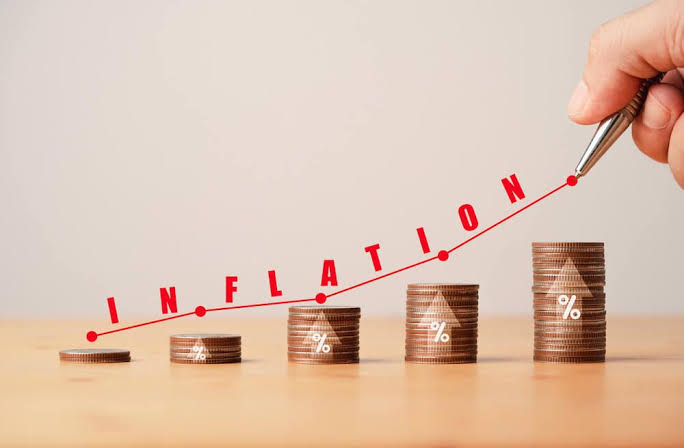India’s fiscal deficit has been a persistent concern for policymakers and economists alike, reflecting the gap between the government’s expenditures and its revenues. A high fiscal deficit can lead to rising public debt, inflation, and economic instability, which necessitates effective measures for its reduction. This blog delves into India’s efforts to reduce its fiscal deficit, examining the progress made, the challenges encountered, and the strategies implemented to achieve fiscal consolidation.
Understanding Fiscal Deficit
Fiscal deficit occurs when a government’s total expenditures exceed its total revenues, excluding money borrowed. It is expressed as a percentage of Gross Domestic Product (GDP) and serves as a critical indicator of a country’s financial health. A sustainable fiscal deficit is essential for maintaining economic stability, ensuring that government spending does not outstrip its capacity to generate revenue.
The Current State of India’s Fiscal Deficit
As of 2024, India’s fiscal deficit remains a significant concern, with the government striving to balance the need for economic growth with fiscal prudence. According to the Union Budget, the fiscal deficit for the fiscal year 2024-25 is projected at around 5.9% of GDP, reflecting a commitment to fiscal consolidation while accommodating necessary expenditures for development and social welfare programs.
Progress Made in Reducing Fiscal Deficit
- Fiscal Responsibility and Budget Management Act (FRBM):
- The FRBM Act, enacted in 2003, aimed to ensure fiscal discipline by setting targets for the fiscal deficit. The government has committed to adhering to the targets set under this act, which has helped in gradually reducing the fiscal deficit over the years.
- Expenditure Management:
- The government has taken steps to control non-essential expenditures, focusing on capital investments that spur growth. By prioritizing spending on infrastructure, education, and healthcare, the government aims to stimulate economic activity while maintaining fiscal discipline.
- Revenue Enhancement Measures:
- Efforts to enhance revenue collection have been a priority. Initiatives such as the implementation of the Goods and Services Tax (GST) have aimed to streamline the tax structure, reduce evasion, and broaden the tax base. The GST has led to an increase in tax compliance and revenue generation.
- Privatization and Disinvestment:
- The government has pursued disinvestment in public sector enterprises as a means to generate additional revenue. By selling stakes in loss-making and underperforming public sector units, the government aims to reduce its financial burden and enhance its fiscal position.
- Boosting Economic Growth:
- Economic growth is a critical factor in reducing the fiscal deficit. The government has focused on policies that promote growth, such as the Production Linked Incentive (PLI) scheme, which encourages manufacturing and investment in various sectors. Higher economic growth translates into increased tax revenues, helping to narrow the fiscal deficit.
Challenges in Reducing Fiscal Deficit
- Economic Slowdown:
- The COVID-19 pandemic had a significant impact on India’s economy, leading to a sharp decline in tax revenues. Although the economy has shown signs of recovery, the lingering effects of the pandemic pose challenges in achieving fiscal targets.
- Rising Subsidy Burden:
- Subsidies on essential goods such as food, fuel, and fertilizers continue to strain the government’s finances. While subsidies are crucial for supporting vulnerable populations, their rising costs pose a challenge for fiscal consolidation efforts.
- Interest Payments:
- A substantial portion of government revenue is allocated to servicing debt, limiting the funds available for development and welfare programs. High-interest payments on public debt can impede the government’s ability to invest in growth-promoting initiatives.
- Political Considerations:
- Political considerations often influence fiscal policy decisions. The need to address public concerns and maintain support can lead to reluctance in implementing necessary austerity measures or subsidy cuts.
- Global Economic Factors:
- Global economic uncertainties, such as fluctuating oil prices and geopolitical tensions, can impact India’s fiscal health. Volatile commodity prices can lead to higher import bills and inflation, complicating fiscal management.
Strategies for Achieving Fiscal Consolidation
- Strengthening Tax Administration:
- Enhancing the efficiency of tax collection through better administration, digitalization, and reducing compliance costs can significantly boost revenue. The government can invest in technology to streamline tax processes and improve taxpayer services.
- Reducing Non-Plan Expenditure:
- A focus on reducing non-plan expenditures, which include recurring costs not directly linked to development projects, can free up resources for productive investments. This involves scrutinizing spending on subsidies, administrative expenses, and other non-essential areas.
- Enhancing Capital Expenditure:
- Increasing capital expenditure on infrastructure projects can provide a multiplier effect on the economy. Investing in roads, railways, and other infrastructure can stimulate economic activity, generate jobs, and ultimately lead to higher revenues.
- Encouraging Private Sector Participation:
- The government can encourage public-private partnerships (PPPs) in infrastructure development, healthcare, and education to share the financial burden and improve service delivery. This approach can reduce fiscal pressures while ensuring better outcomes.
- Revisiting Subsidy Structures:
- Rationalizing subsidies to target them more effectively can help control expenditure. Direct cash transfers to beneficiaries instead of broad subsidies can ensure that support reaches those who need it most while reducing fiscal strain.
- Promoting Export Growth:
- Fostering an export-oriented growth strategy can enhance foreign exchange earnings and improve the fiscal balance. By supporting sectors with export potential through incentives and policies, the government can increase revenue and narrow the deficit.
Conclusion
India’s efforts to reduce its fiscal deficit are crucial for ensuring long-term economic stability and growth. While progress has been made through various measures, significant challenges remain. A comprehensive strategy that includes strengthening tax administration, controlling expenditures, and promoting economic growth will be essential for achieving fiscal consolidation. The government must balance the need for fiscal discipline with investments in social welfare and development, ensuring that the benefits of economic growth are equitably distributed among all sections of society. With sustained efforts and prudent fiscal management, India can navigate the complexities of fiscal policy and work towards a more sustainable economic future.

